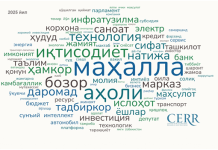The longstanding tensions between Iran and the United States have been a defining feature of international relations for decades. Rooted in a complex web of historical, political, and ideological factors, the relationship between these two nations has experienced both periods of diplomatic engagement and heightened hostilities. As of 2024, the ongoing tensions continue to shape the dynamics of the Middle East and have far-reaching implications for global geopolitics.
The roots of the Iran-U.S. tension can be traced back to the Iranian Revolution of 1979 when the U.S.-backed Shah was ousted, leading to the establishment of the Islamic Republic of Iran. The subsequent hostage crisis, where 52 American diplomats were held captive for 444 days, set the stage for a strained relationship that persisted through the years. The United States’ support for Iraq during the Iran-Iraq War in the 1980s further deepened the mistrust between the two nations.
One significant episode in recent history was the signing of the Joint Comprehensive Plan of Action (JCPOA) in 2015, an agreement aimed at curbing Iran’s nuclear program in exchange for sanctions relief. However, tensions escalated when the U.S. unilaterally withdrew from the deal in 2018, citing concerns over Iran’s regional activities and missile development. The withdrawal strained diplomatic ties and led to a renewed cycle of economic sanctions.
The reimposition of economic sanctions by the U.S. severely impacted Iran’s economy, contributing to domestic unrest and affecting the livelihoods of ordinary citizens. Meanwhile, the region witnessed a surge in proxy conflicts, with Iran accused of supporting militias in Iraq, Syria, Yemen, and Lebanon. The U.S. responded with increased military presence and sanctions, creating a volatile situation with potential ripple effects across the Middle East.
Incidents in the Persian Gulf, including attacks on oil tankers and the downing of drones, escalated tensions further. Both sides engaged in military posturing, heightening the risk of a direct military confrontation. The assassination of Iranian General Qasem Soleimani in January 2020 by a U.S. drone strike added another layer of complexity to the relationship, leading to increased hostilities and threats of retaliation.
Despite the escalations, diplomatic efforts to ease tensions have not been entirely absent. Various international actors, including European nations and the United Nations, have sought to mediate and encourage dialogue. The change in U.S. leadership in 2021 saw a shift in approach, with the Biden administration expressing interest in rejoining the JCPOA, albeit with the need for negotiations on broader issues.
The Iran-U.S. tension remains a critical and evolving aspect of global geopolitics. The complex interplay of historical grievances, regional power dynamics, and nuclear concerns continues to shape the relationship between these two nations. As the international community navigates these challenges, the path forward remains uncertain, requiring a delicate balance of diplomacy, dialogue, and strategic decision-making to promote stability in the region and beyond.

















